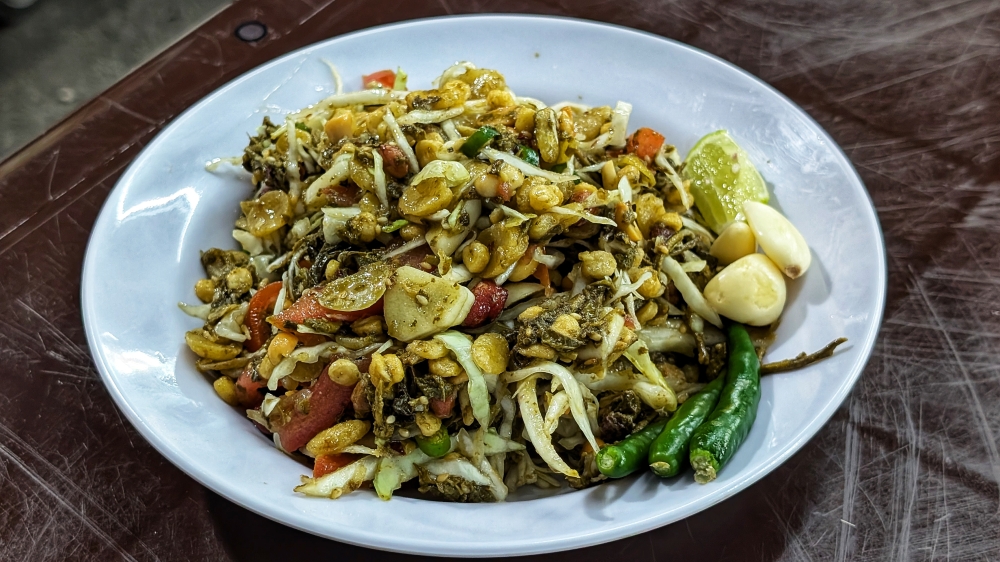KUALA LUMPUR, Aug 29 — My friend Hong, a fellow writer and avid “foodie” – a label that makes me squirm, and I hope makes him squirm too – is an interesting character.
When he’s not talking about meeting Japanese wrestlers of Korean descent in Osaka or putting me on to Beck’s 2008 album Modern Guilt, he’s usually double, triple, quadruple texting me about getting linopot delivered to my house, eating egusi and fufu at a place that no longer exists, or that time he ate horse steak in Amsterdam.
Hong also happens to be my neighbour, and when I run into him, he tends to show up like an absentee father bearing gifts: some closer to home, like mee siput or tapai ubi; some from further afield, like nem chua, a Vietnamese fermented pork sausage eaten raw.
Like any good absentee father, his idea of a night out always involves a copious amount of beer and cigarettes; however, with him, the food has to tell a story, not just be pub grub.
That’s how we found ourselves in Desa Sri Hartamas one night: not in a bar, and not in one of the neighbourhood’s many trendy Korean or Japanese spots, but under a large canopy tent extending from S Double One Restaurant, one of the few kopitiams in the area known mainly for economy rice and a handful of other stalls.

The stall is located under the canopy next to S Double One Restaurant. — Picture by Ethan Lau
Except for a satay stall near the front and a steamed fish and dai chow stall at the back, the majority of the stalls serve either Thai or Myanmar food, reinforced by the sound of both languages flying through the thick, smoky air, thanks to the large groups of their compatriots gathered here to eat.
We’re here for a stall specialising in the latter.
They make a few concessions to us Malaysians, offering familiar flavours like tomyam and mala.
Still, upon closer inspection, the presence of mohinga, Myanmar’s unofficial national dish of fish broth with rice noodles, and lahpet thoke, fermented tea leaf salad, hints at a more interesting story.
It is difficult to overstate the significance of tea, which is native to Myanmar.
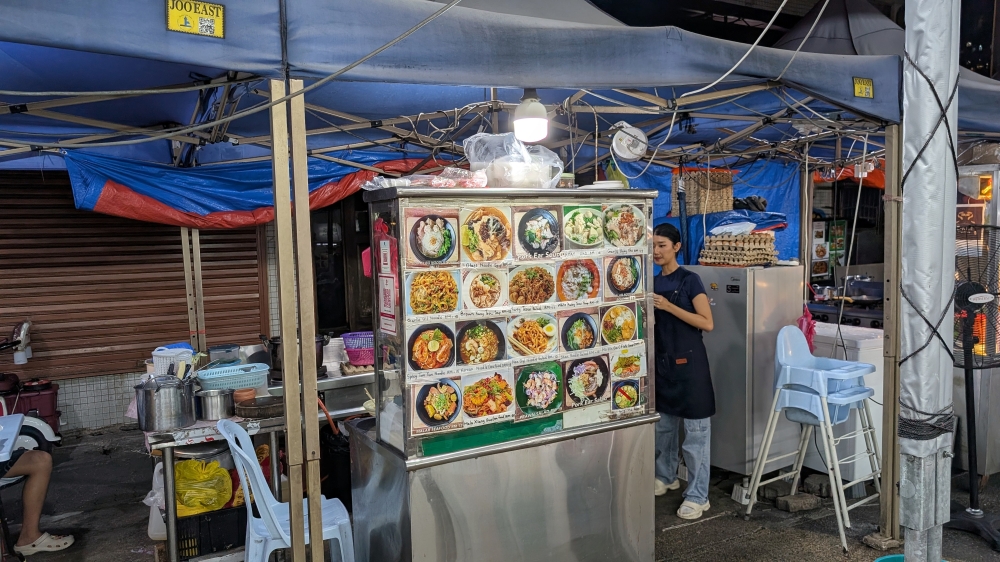
It is the nondescript fourth stall from the left. — Picture by Ethan Lau
In Myanmar, their language is one of the few in the world that does not derive its word for tea from Chinese, and vast stretches of the country are devoted to its cultivation.
Tea is consumed both as a drink and as a food in its own right.
Lahpet, then, refers to fermented tea leaves, used in a wide range of preparations, though most famously in lahpet thoke, a salad beloved across the country.
This stall doesn’t strictly list it on its menu; a picture of something called “tea leaves rice salad” is squeezed into the bottom right corner, but ask for lahpet thoke (RM12) and the two friendly ladies at the stall will gladly prepare it for you.
And you should: it’s one of the best things you’ll try here.
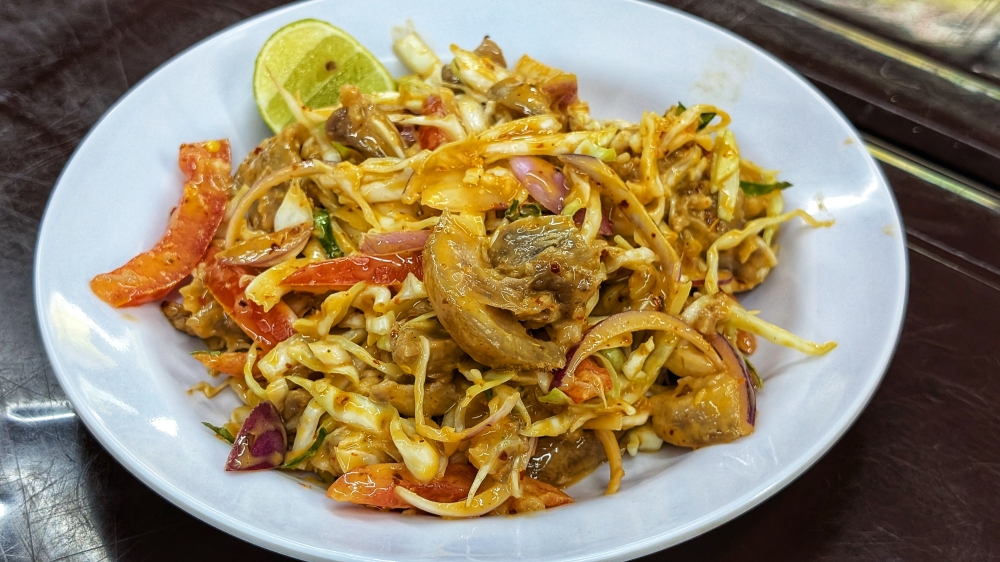
Pig’s ear salad tossed with cabbage, tomatoes and seasoned with kaffir lime leaf and roasted gram flour. — Picture by Ethan Lau
The lahpet is tossed with shredded cabbage and tomatoes, slices of raw garlic and chilli, and a crunchy trio of chickpeas, broad beans and peanuts.
On the side, a squeeze of lime, plus three whole garlic cloves and three chillies. Raw.
The leaves are soft, the beans and nuts crunchy, the garlic and chilli pungent; everything together is sour, salty and spicy – the holy trinity of flavours that defines Myanmar food.
These three pillars of flavour carry through to everything that follows, including a pork ear salad (RM12): chewy, snappy pieces of cartilage-rich ear tossed with cabbage and tomatoes in a tangy, creamy dressing thickened with roasted gram flour made from chickpeas.
A touch of kaffir lime leaf lends a citrusy lift, and it’s the sort of dish that makes sense of his need for all that beer.
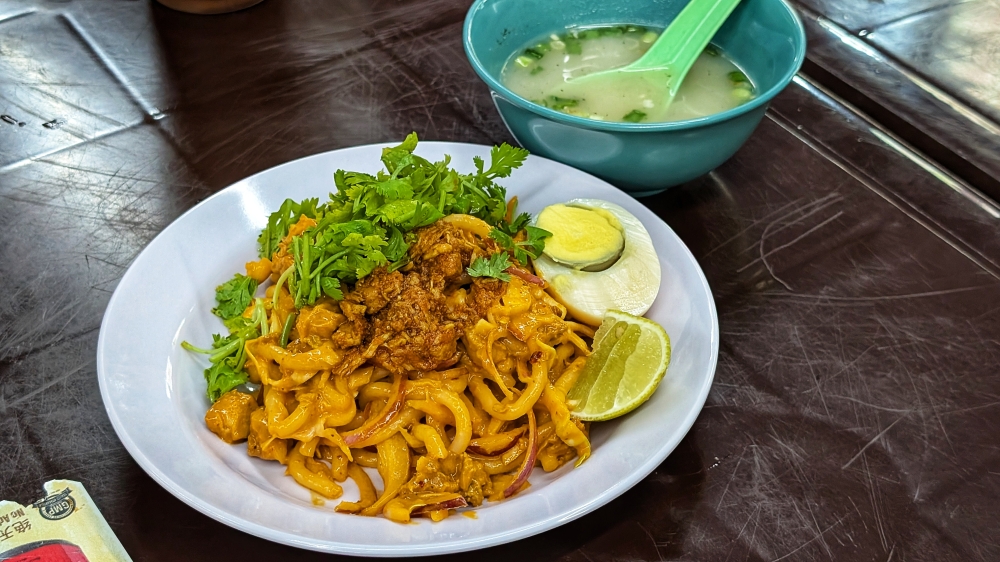
‘Nangyi thoke’ is a typical example of Myanmar noodle salads, with round rice noodles in a thick mixture of chicken curry, roasted gram flour and chilli oil. — Picture by Ethan Lau
Myanmar cuisine is also full of “dry” noodle dishes that can be perceived as noodle salads, in that they’re tossed and served fresh rather than cooked or stir-fried.
Nangyi thoke (RM10) is a classic example, with round rice noodles (think lai fun) topped with curried chicken, seasoned and tossed with roasted gram flour, turmeric and chilli oil, with a peppery chicken broth on the side.
The thick noodles wear the nutty, creamy seasoning well, and the slow-building heat makes another sip of beer inevitable.
But my favourite has to be the Shan noodle salad (RM10), a dark, saucy pile of thin rice noodles (resembling Thai sen lek) tossed with fermented black beans, chicken, peanuts and leafy greens, a combination that leans Chinese, with a savoury, nutty depth that somewhat recalls dan dan mian without the spice.
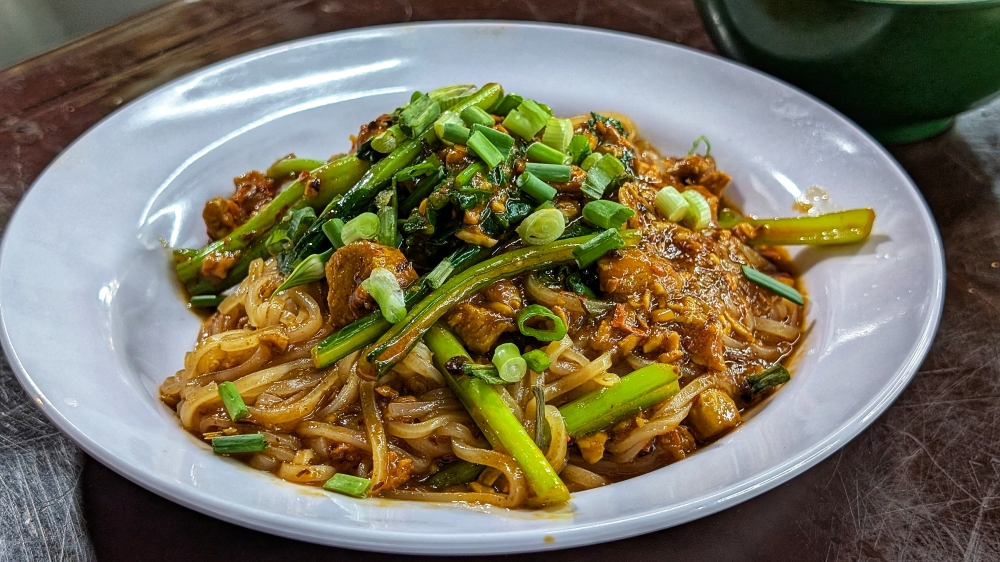
The Shan noodle salad will be familiar to most Malaysians, in both appearance and taste. — Picture by Ethan Lau
Shan state in Myanmar borders Thailand to the south and Yunnan, China to the north, which may explain why this dish tastes so markedly different from everything else we had that night. I devoured this.
Myanmar’s unofficial national dish, mohinga (RM10), is sometimes likened to Malaysian laksa: a bold fish broth with rice noodles, though the similarities mostly end there.
Roasted gram flour thickens the broth, which typically carries ginger, garlic and lemongrass, with the distinct taste of chickpeas coming through.
The version here is surprisingly flavourful despite its unexpectedly thin consistency, but then again, mohinga varies widely, with more than 15 recognised varieties across different regions and ethnic groups.
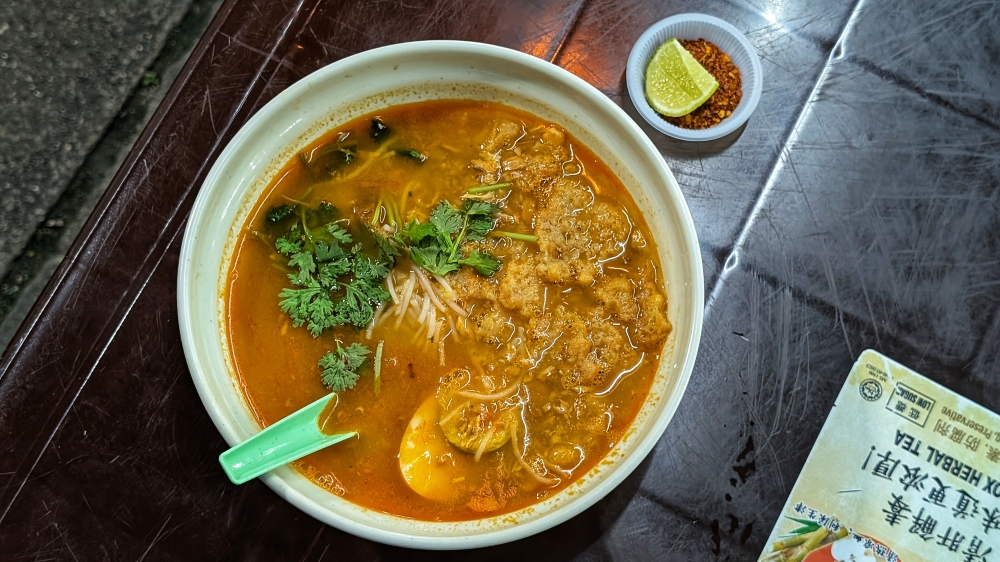
‘Mohinga’ is the unofficial national dish of Myanmar. — Picture by Ethan Lau
Reaching our sixth round of beer, we sat and watched as a particularly dolled-up group arrived, with a young, flamboyant man at the centre sporting the most floral of silk shirts and a head of blonde-streaked hair that was simply magnificent.
Only a short distance away, the never-ending queue at a popular Korean restaurant specialising in Busan-style stir-fried webfoot octopus camped outside the door, driven by what I can only assume to be the “algorithm” preying on a crippling “fear of missing out”.
We were sitting maybe 20 paces away, but such was the contrast between the magic of our evening and the banality of theirs that there might as well have been an ocean between us.
They don’t know what they’re missing.
Myanmar Food Stall, S Double One Restaurant
52, Jalan 27/70a,
Desa Sri Hartamas, Kuala Lumpur.
Open daily, 11am-10.45pm
* This is an independent review where the writer paid for the meal.
* Follow us on Instagram @eatdrinkmm for more food gems.
* Follow Ethan Lau on Instagram @eatenlau for more musings on food and self-deprecating attempts at humour.


